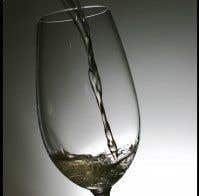€18.50
It's always a pleasure to discover a new champagne producer and this one seems worthy of attention from some US or UK importer. They might be put off, however, by the fact that Huré Frères is not technically a grower champagne in that the grapes come from, as the name suggests, three brothers and so the vineyards that supply the various cuvées have three different owners rather than one. Because of this, the code on the label is 'NM' for négociant-manipulant, as on the labels of the great majority of champagne sold today from the big houses, rather than 'RM', the tell-tale designation for a récoltant-manipulant, or grower.
Raoul Huré and his two brothers began the business in the 1970s but his brothers have now retired and his son François is back in harness, having studied at Dijon, gained valuable experience at the Hospices de Beaune, Domaine de Montille, M Chapoutier and in the Antipodes. It was wine writer James Halliday at Coldstream Hills who introduced François to New Zealand wines, which led to his crossing the Tasman and working at both Pegasus Bay in Canterbury and Gypsy Dancer in Central Otago, whose winemaker he married and has brought back to the family base in the village of Ludes on the Montagne de Reims.
This prolonged exposure to the unpolluted air of the Land of the Long White Cloud presumably served only to strengthen the Huré determination to clean up their act in the vineyard (Champagne's vineyards are notorious). They claim to have been fully sustainable since 2000 but three years ago stopped using herbicides and started to cultivate their soil and have so far converted 60% of their vineyards thus. They have also been experimenting with biodynamic viticulture and report that the soil does now seem to have more oxygen and life in it (those famous Champagne worms, presumably – see A can of bubbles).
They are less forthcoming with the detail of their winemaking. I see on their website www.champagne-hure-freres.com, pictures of some large oak casks but they make no specific reference to them in their literature. All I am  told is that they eschew enzymes and fining agents, preferring to clarify with a 'tiny filtration'.
told is that they eschew enzymes and fining agents, preferring to clarify with a 'tiny filtration'.
I recently tasted two current bottlings from Huré, both based on the excellent 2004 harvest, and was impressed by both, scoring them, for what it's worth, 17.5 and 17 – high scores for me. My favourite was Huré Frères, L'Inattendue Blanc de Blancs NV Champagne, which had tiny but steady bubbles and the fine, delicate nose seemed attractively influenced by lightly toasty autolysis, the process of ageing a wine on the lees of the second fermentation in bottle. This all-Chardonnay blend from grapes grown in Ludes, Rilly-la-Montagne and Vavray-le-Grand seemed to me to be based on very fine raw materials and then had fantastic impact on the palate – like a very intense brush, revitalising the palate. I was also impressed by the finesse. Dosage was just 7 g/l, apparently, and it is certainly attractively dry.
Its stablemate, the regular vintage champagne Huré Frères, L'Instantanée 2004 Champagne was much funkier on the nose and will probably last much longer – it may even be a bit young – but the texture was not quite as fine. This wine may have been demonstrating the phenomenon referred to in François Huré's advice, 'our wines need 10 to 15 minutes to open up in the glass'. While I admire reticence in a wine generally, I think it's rather a long shot to expect drinkers to keep their glasses of champagne untouched for quarter of an hour…
For the moment, these champagnes are best bought direct from Huré Frères, details here. L'Inattendue ('the unexpected') NV is €18.50 a bottle at the cellar door and L'Instantanée 2004 is €20.

